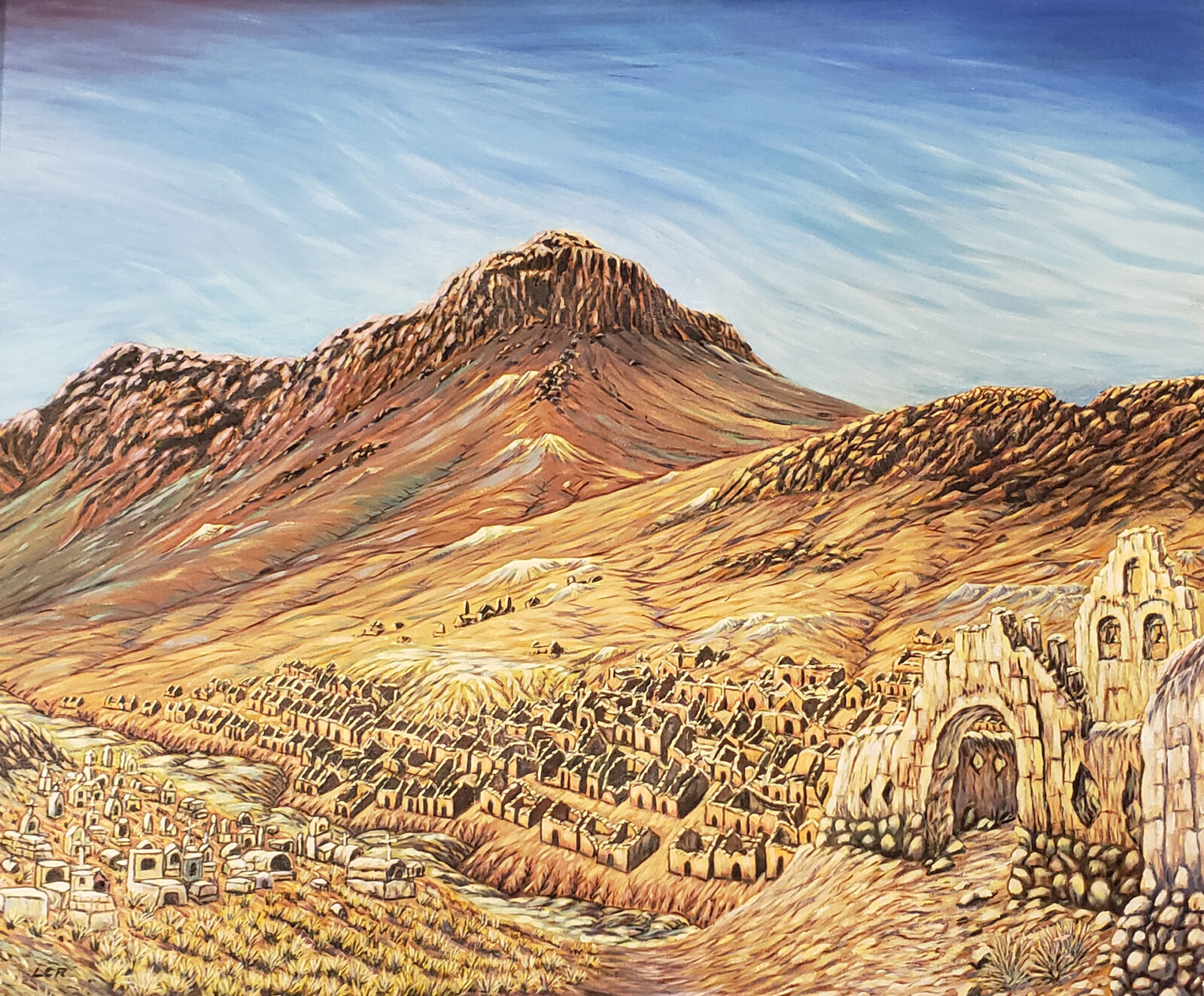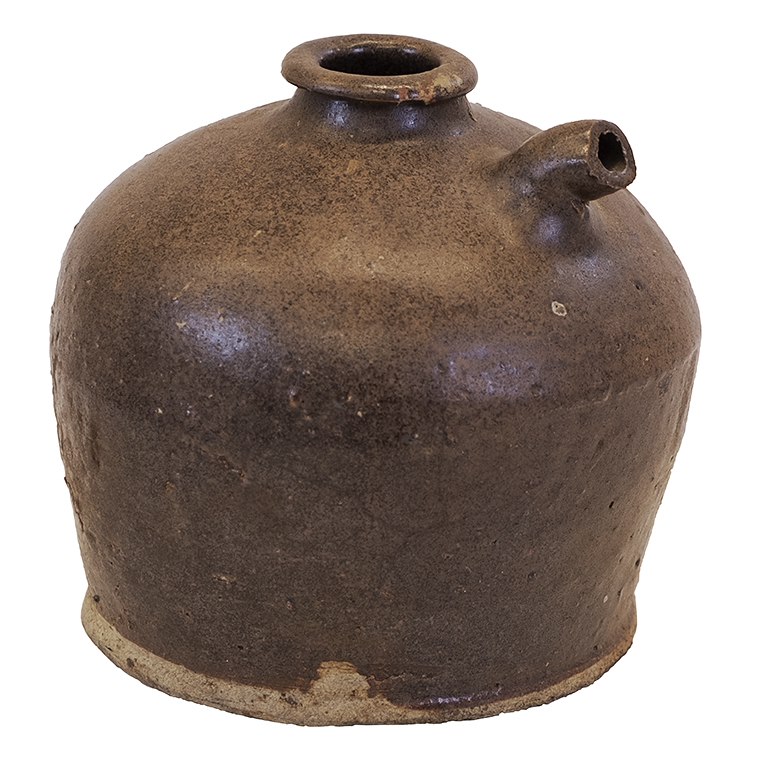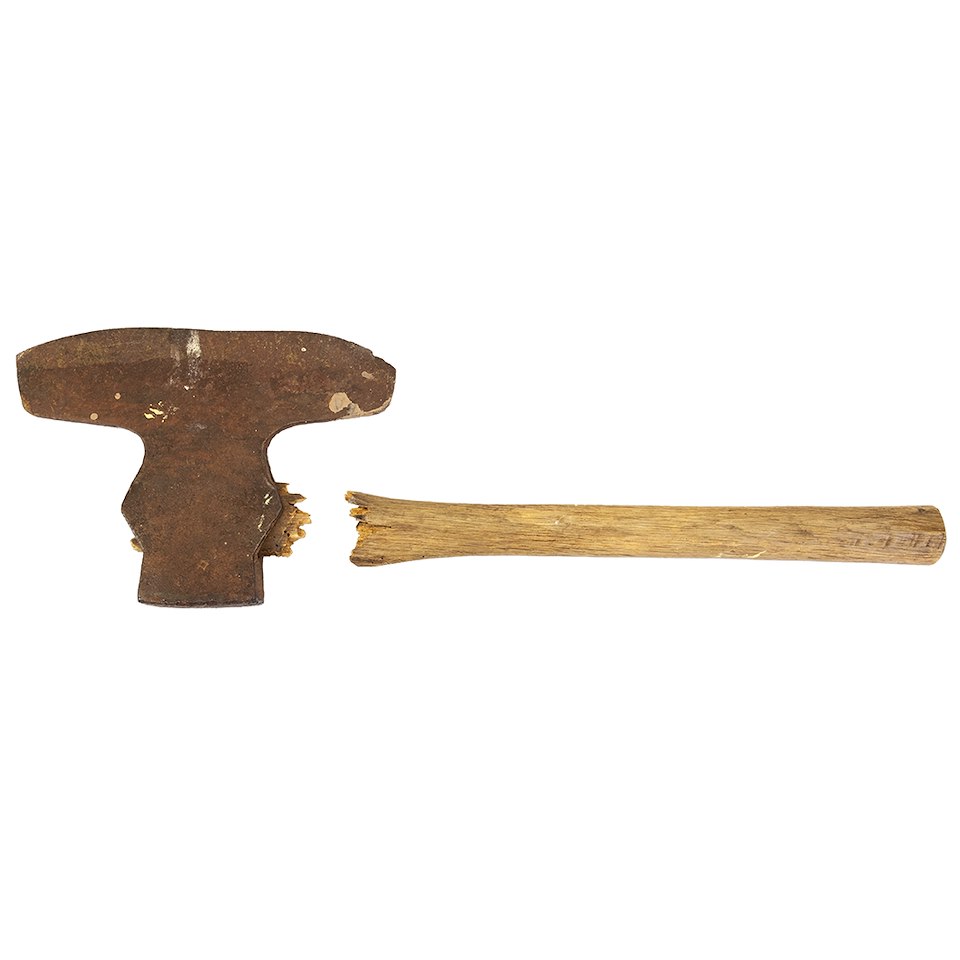Most of the artifacts and artwork donated by Mr. Raymond were accompanied by detailed descriptions which don’t fit well on exhibition labels. Here is one such story.
Ghost Town
Bolivian Andes
1961
H1989-030-0002

“This Andean ghost town, long abandoned, certainly is a contrast to the familiar ghost town scenes of our Western United States. Old ghost towns of the high Andes have been well preserved by their arid environment. Except for the thatch roofs, the box-shaped adobe huts are still in their original form after more than four centuries of abandonment. Upon viewing such a camp for the first time and seeing all the natural variegated pastel orange, yellow and brown pigments of the old silver mine dumps in the background, one is aroused to a mood of spuculation [sic]. The adventurer wonders whether any rich ore was missed by the primitive operators. The archaeologist is fascinated by the history and relics of the past and the methods of construction, while the explorer is intrigued with the colorful setting and the mystery of abandonment. The presence of arsenic, lead, copper and iron in the old mine dumps have now turned into brilliant oxides, true works of the Grand Artists.
“The story goes that death struck this old mining camp of Inca times and it was suddenly abandoned. One can speculate that a sudden epidemic occurred or it may be that the water became toxic.
“The old circular shaft collar with its interior descending stairway cut from solid rock attests to its antiquity. Interestingly, 400 years later, engineers found that circular shafts were sound designs. Old stone hammers used in the mines were still to be found on the premises. Primitive beehive-shaped silver furnaces were found along the foothills at the edge of camp. The interior surfaces of the broken arches of the furnaces were well glazed. Prills [solid globules] of lead-silver remained in the ash and soot covering the base of the furnace. This was the primitive metallurgy of the Incas which had been carried over the early colonial period. Now the old camp is silent.” – Louis C. Raymond



